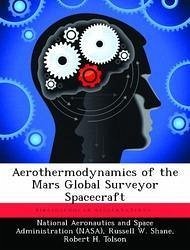The aerothermodynamics characteristics of the Mars Global Surveyor spacecraft are investigated and reported. These results have been used by the Mars Global Surveyor mission planners to design the aerobraking phase of the mission. Analytical and Direct Simulation Monte Carlo computer codes were used with a detailed, three dimensional model of the spacecraft to evaluate spacecraft aerobraking characteristics for flight in free molecular and transitional flow regimes. The spacecraft is found to be aerodynamically stable in aerobraking and planned contingency configurations. Aerodynamic forces, moments, and heating are found to be highly dependent on atmospheric density. Accommodation coefficient. is seen to strongly influence drag coefficient. Transitional flow effects are found to reduce overall solar panel heating. Attitude control thruster plumes are shown to interact with the freestream, diminishing the effectiveness of the attitude control system and even leading to thrust reversal. These plume-freestream interaction effects are found to be highly dependent on freestream density.







